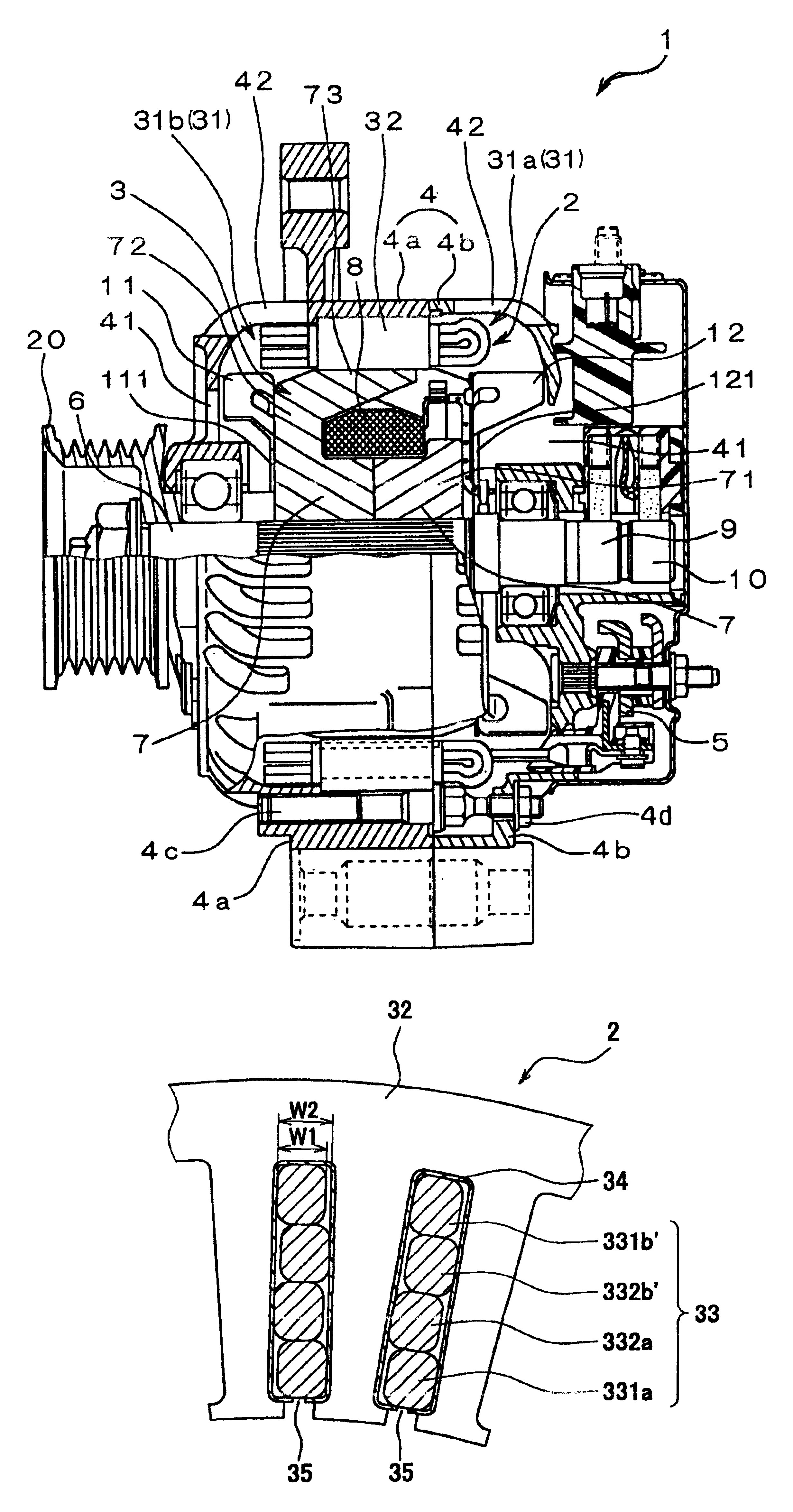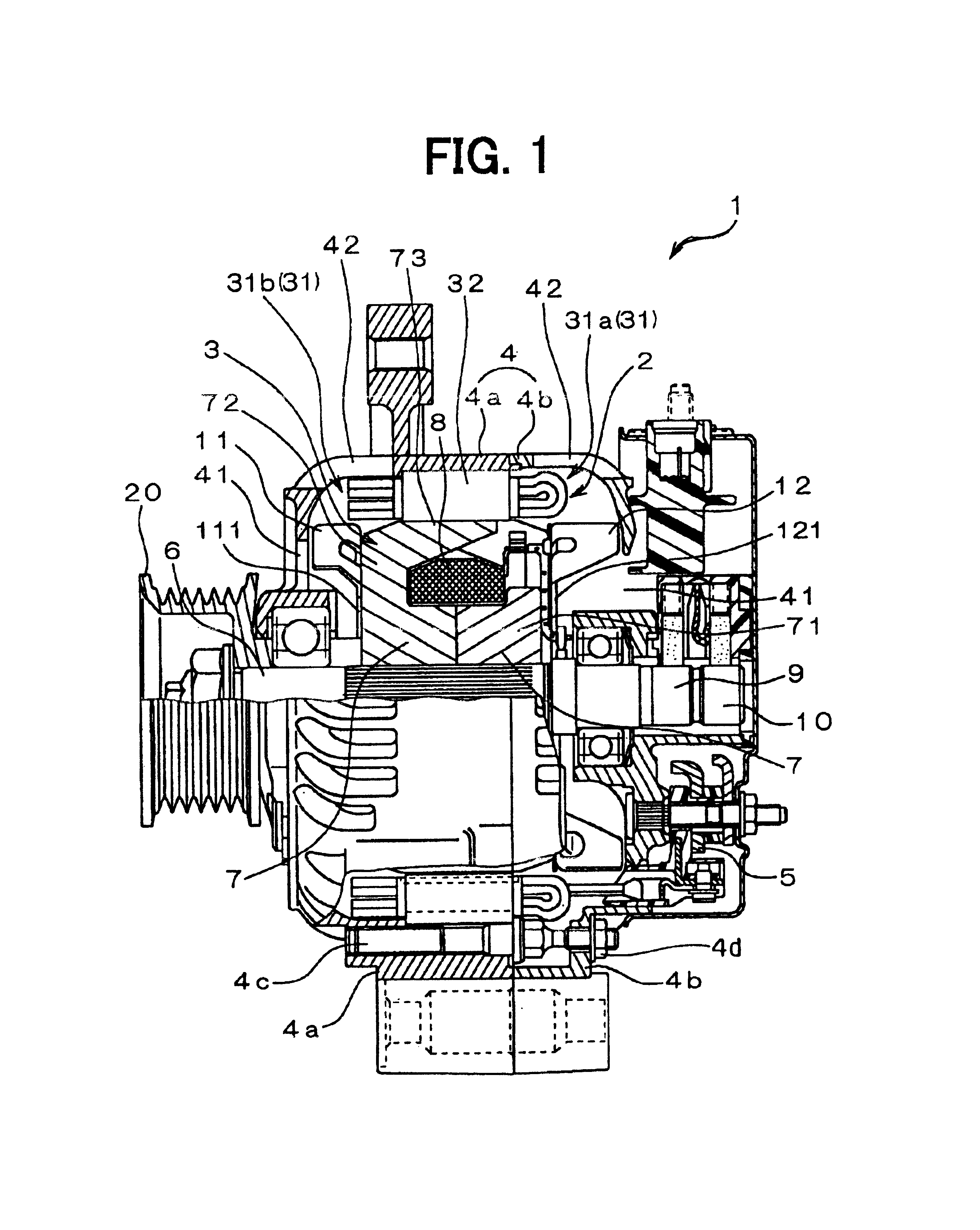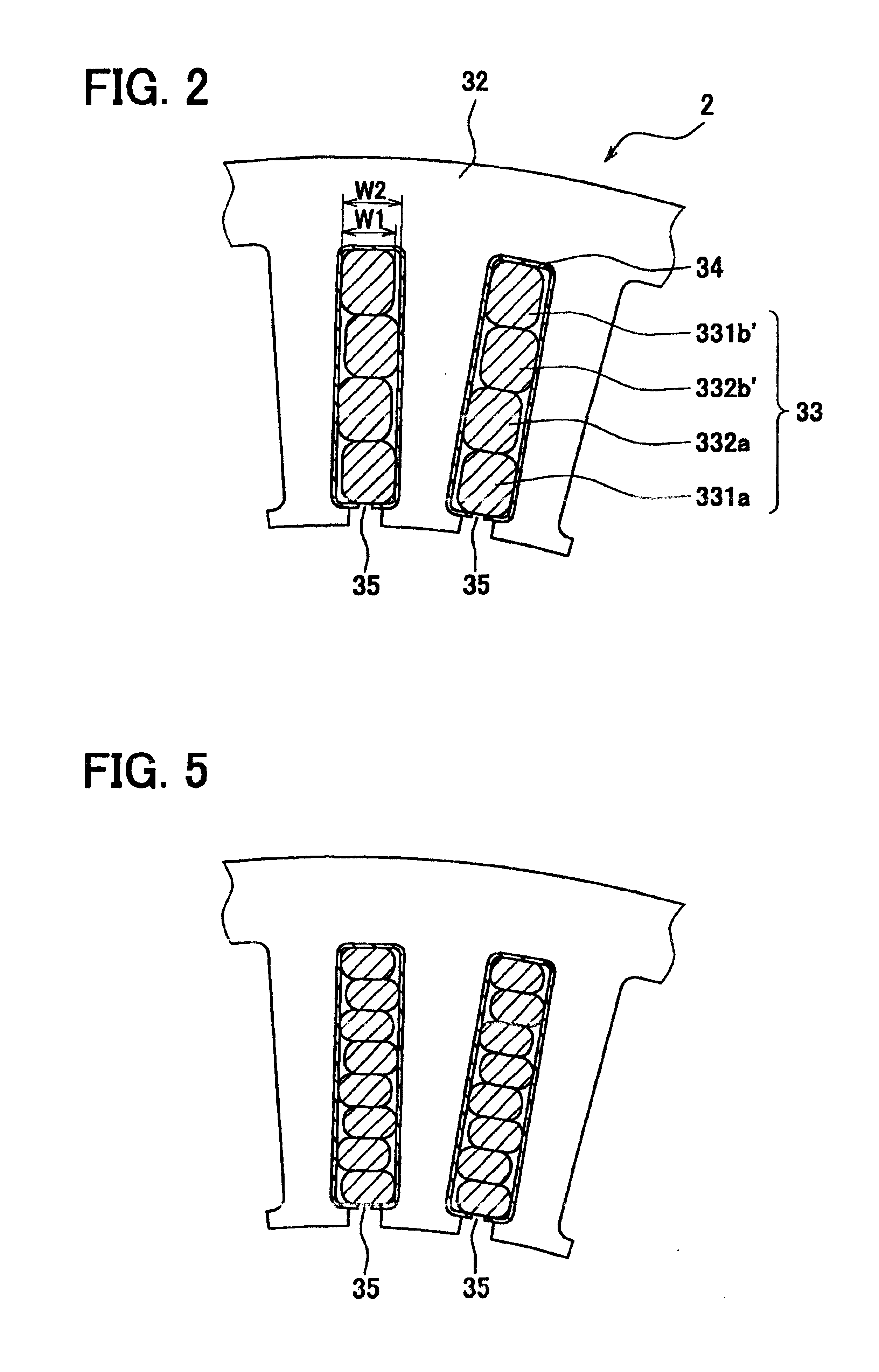Rotary electric machine
a rotary electric machine and electric motor technology, applied in windings, dynamo-electric components, magnetic circuit shapes/forms/construction, etc., can solve the problems of increasing magnetic noise due to an increase in magnetic vibration, power output will decrease, etc., to improve the power output, the effect of reducing the temperature of the stator winding
- Summary
- Abstract
- Description
- Claims
- Application Information
AI Technical Summary
Benefits of technology
Problems solved by technology
Method used
Image
Examples
Embodiment Construction
[0015]The rotary electric machine of the present invention is for example applied to a three-phase vehicular alternator that is mounted and fixed on an engine and driven by the engine. An embodiment of the vehicular alternator in which the present invention is applied will be described in detail with reference to the drawings.
[0016]As shown in FIG. 1, the vehicular alternator 1 of the embodiment includes a stator 2 functioning as an armature, a rotor 3 functioning as a field magnet, a housing 4 having a front housing 4a and a rear housing 4b, and a rectifier 5. The front housing 4a and the rear housing 4b hold the stator 2 by a stud bolt 4c and rotatably support the rotor 3. The rectifier 5 rectifies an AC voltage output from the stator 2 to a DC voltage.
[0017]The rotor 3 rotates with a shaft 6. The rotor 3 includes a Lundell-type pole core 7, a field coil 8, slip rings 9, 10, a mixed flow fan 11, and a centrifugal fan 12 as air blowing devices. The shaft 6 is connected to a pulley ...
PUM
 Login to View More
Login to View More Abstract
Description
Claims
Application Information
 Login to View More
Login to View More - R&D
- Intellectual Property
- Life Sciences
- Materials
- Tech Scout
- Unparalleled Data Quality
- Higher Quality Content
- 60% Fewer Hallucinations
Browse by: Latest US Patents, China's latest patents, Technical Efficacy Thesaurus, Application Domain, Technology Topic, Popular Technical Reports.
© 2025 PatSnap. All rights reserved.Legal|Privacy policy|Modern Slavery Act Transparency Statement|Sitemap|About US| Contact US: help@patsnap.com



